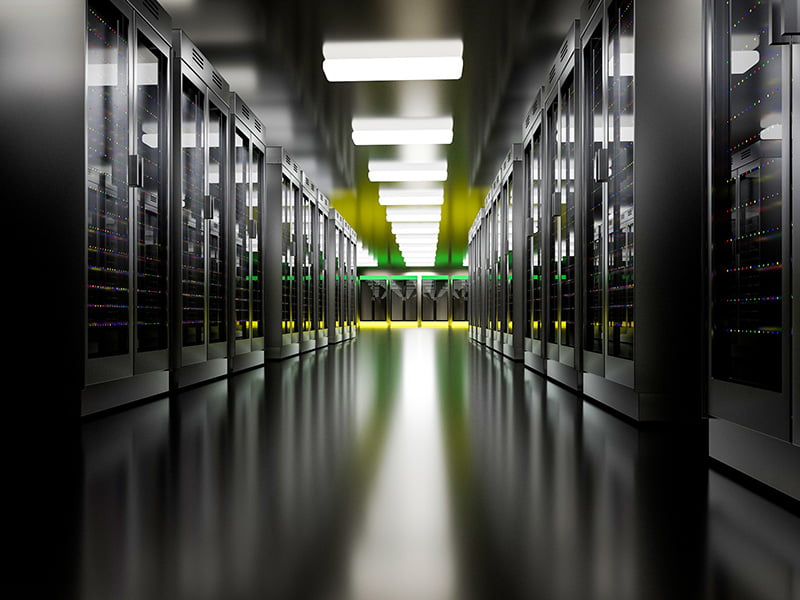The largest provider of data centre services to the federal government has publicly revealed its greenhouse gas emissions for the first time but is continuing its fight to have data from a previous year kept secret.
Figures released by the Clean Energy Regulator last week reveal Canberra Data Centres (CDC) had emissions of 187,568 tonnes in the 2021-22 financial year – almost all of which were in the form of indirect Scope 2 emissions (187,397 tonnes).
The emissions are on the lower end of the spectrum for data centre providers in Australia, with competitors NEXTDC, Equinix, Amazon Corporate Services and AirTrunk all reporting higher emissions.
The data, collected and published publicly under the National Greenhouse and Energy Reporting scheme (NGERs), also shows CDC consumed 856,414 Gigajoules of energy in the 2021-22 financial year.

The reporting marks the first time that CDC, which counts Defence, Home Affairs and the Tax Office as customers, has publicly disclosed its Scope 1, Scope 2 and energy consumption data in full, having sought to withhold the information for 2020-21.
In 2021, the first year that the company hit the reporting threshold, CDC applied to the regulator to keep its Scope 2 and energy consumption data for the 2020-21 financial year commercial in confidence, making it the only company with greater than 50 tonnes of emissions to do so.
Scope two greenhouse gas emissions are released “from the indirect consumption of an energy commodity”, whereas scope one are released “as a direct result of an activity”, according to the regulator.
In its application, released under freedom of information laws, CDC argued that disclosure of its emissions could reveal trade secrets about its data centre operations – one of three defences permissible under the NGER Act.
The documents show CDC’s application to have its emissions data withheld relates to a corporate initiative, but the details of the initiative have been redacted. CDC’s work with “national security and other critical [federal] government departments that store sensitive and classified information” is at least partially related to the corporate initiative.
“CDC provides specialist data centre services to government and national security customers with high information classification and security requirements and is subject to specific requirements regarding the handling and disclosure of customer data,” the application states.
The company is still waiting for a decision on its application more than 16 months later, although a spokesperson for the Clean Energy Regulator told InnovationAus.com that a ruling is “expected imminently”.
With the decision still pending, CDC’s emissions data for 2021-22 was initially withheld from the dataset published by the Clean Energy Regulator, but the data was later published at the company’s request.
“While a decision on a section 25 application is pending, data for a successive reporting year is generally withheld as a part of that process, unless the Clean Energy Regulator is instructed otherwise by the applicant,” the CER spokesperson said.
“In this instance, the applicant informed the Clean Energy Regulator on 1 March 2023 that it does not wish for its 2021-22 data to be withheld. As such, the 2021-22 NGER Data Publication has now been updated with a note advising on the status of the 2020-21 Section 25 application.”
A spokesperson for CDC told InnovationAus.com it had “worked with our stakeholders to support efforts to improve climate change action through greater disclosure and transparency, including making available the NGER reporting information for FY22”.
The spokesperson added that “CDC remains focused on pursuing its strategy to deliver industry-leading sustainability outcomes aligned with global benchmarks such as the SBTi Net-Zero Standard, while providing transparency under the current NGER reporting methodologies”.
All other data centres to emit at least 50 tonnes of greenhouse gases – the threshold for reporting – last year reported their emissions data in full, including Equinix, NEXTDC, AirTrunk, Amazon, Global Switch and Fujitsu.
NEXTDC was the biggest emitter of the data centre providers covered by report, producing 351,338 tonnes of emissions (1289 tonnes of Scope 1 and 350,049 tonnes of Scope 2) in 2021-22, an increase of 16 per cent on 2020-21 figures.
The company’s emissions have almost doubled since 2017-18, when it reported 184,806 tonnes, although in that time it has launched a number of new data centres across Australia, including its largest to date in Melbourne.
Equinix was the next largest producer, emitting 309,926 tonnes (826 tonnes of Scope 1 and 309,100 of Scope 2) in 2021-22, up from 300,052 tonnes in 2020-21, 298,618 in 2019-20 and 251,847 in 2018-19.
Amazon Corporate Services emitted 261,209 tonnes (626 tonnes of Scope 1 and 260,583 tonnes of Scope 2) last year – almost double what it emitted just two years ago (134,875 tonnes in 2019-20). In 2017-18, Amazon also sought to have its emission data withheld, but the request was refused.
AirTrunk, which has expanded considerable since Macquarie Asset Management bought an 88 per cent stake in 2020, has seen its emissions grow the most of any of the data centre providers, with 258,341 tonnes produced in 2021-22 versus 157,502 tonnes in 2020-21.
Global Switch and Fujitsu, meanwhile, have gone the other way. The emissions of both companies have been falling over the last five years, from a peak of 145,724 tonnes and 153,362 tonnes in 2017-18 to 119,830 tonnes and 91,028 in 2021-22, respectively.
Do you know more? Contact James Riley via Email.

